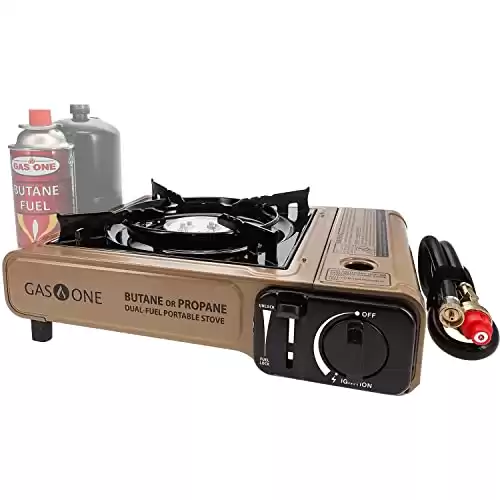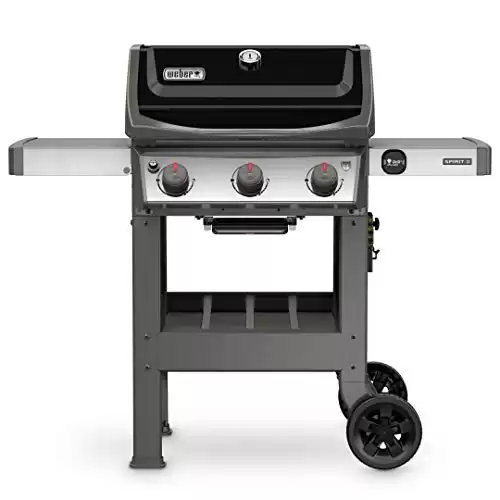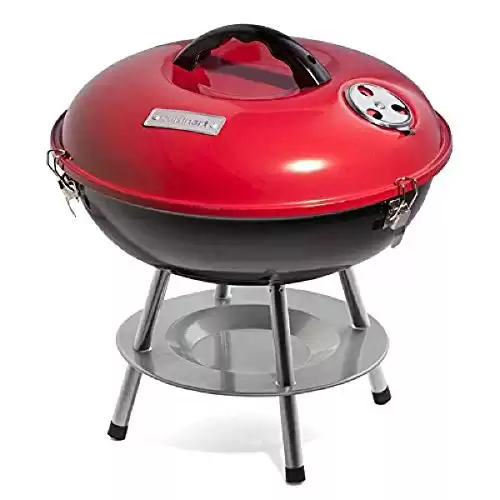Many people in storm-prone areas choose gas ranges as part of their kitchen appliances. They do so thinking that the gas will help them out when there is a power outage.
While it can be helpful to have a gas range, more modern designs are built with an electric starter. This means they need electricity to work too.
However, you’re not completely left without stovetop power. You can manually ignite your gas range. Before you do though, you will want to know how to do so safely to avoid an injury or fire.
This article will help you understand what you can and can’t do with your gas range and gas stove when the power unexpectedly goes out.
You’ll also discover some alternatives that can help you make the most of things until the electricity powers back on again.
Can Gas Ranges Run Without Electricity?
Almost all gas-powered ranges that were produced since the 1990s require electricity to get them going. However, there is a way around the electric ignition that you can use to cook on the stovetop when a power outage happens. All you need are some matches and you can light the burners.
Is It Safe to Use Gas Stove During a Power Outage?
Gas stoves are a great way to save a little more on your annual energy bill. But it all depends how much time you spend cooking on it too. On average, most people with a gas range that doesn’t have a pilot light can expect to pay about $2.30 every month.
For comparison, an electric range costs nearly $6 per month to run.
While it’s more economical, it doesn’t exactly work the way it’s supposed to when the power goes out. Still, you can get around that to heat up food for your family when inclement weather causes a power outage.
Age is also a factor. Not for you, but for your stove. Older stoves are capable of being used during power outages. But new models as a whole won’t be. You should always check the product manual to see what you should do.
Some have an interlock feature. This prevents gas from going into the stove unless electricity is there to power it. It’s for safety reasons.
The interlock was once only reserved for commercial ranges. Now, the interlock is widespread in ones for home use.
Is it safe to use your gas stove? Well, yes and no. Keep reading to find out more.
How to Safely Light a Gas Stove
After checking the manual of your gas stove for all warnings, you can try to light it during a power outage in a manual way.
The best way to do so is with long wooden matches. You can find them for fireplaces and grills. These barbecue matches by Quality Home are 11 inches in length.
There are 160 per package too, and you’ll find many other uses for them besides keeping them on-hand for lighting the stove during an outage.
You can use them to light your grill too!
If possible, do not use regular-sized matches. Because they are much shorter, you have a far greater risk of burning yourself.
Once you light the match, put the lit end close to the flame ports around the burner. Now, promptly turn the switch on the valve to a low setting. You can adjust the flame from there with the switch.
Can I Use My Gas Oven During a Power Outage?
Even though you can work around the range by lighting it with a match, the oven is a different story. Modern ovens can’t be ignited without electricity.
So, you will need to think of other cooking methods. Perhaps that lasagna will be best for another night.
If you can’t get your stove to ignite and the oven is out of the question, then what do you do? Well, you can use your fire pit if you have one or use your grill.
Another great idea for storm-prone areas in summer or winter is to have a small portable stove you can use anytime, anywhere.
This portable burner has dual fuel options so you can choose to use propane or butane. It requires 8-ounce cartridges that you’ll have to buy separately, but it’s great for emergencies or for camping.
Also, the electric ignition means no matches to fuss with so you’ll be good!
If you would rather have something you’d be more inclined to use in good weather for barbecues or when the power goes out, a grill is ideal. Weber’s propane grill has 3 burners to meet your needs.
It also has folding side tables and nifty places to hang your grilling tools.
Or you could go with a charcoal model like this Cuisinart grill. It’s portable so you can take it anywhere.
And it has a dual venting system for optimum temperature control.
These ideas should help you make the most of a power outage if you can’t get your gas range to light up when the power goes out.
What to Do When Gas Range Isn’t Working After a Power Outage
If your gas range is not working after a power outage, you’ll want to see what’s going on. Perhaps the power is back now and you’re ready to cook dinner, only to find your stove isn’t coming on.
Here’s how you can troubleshoot to see what’s wrong with your gas range.
– It won’t light after cleaning
If you’ve just cleaned your gas stove up recently, your igniter might be clogged with debris. Cleaning the burner caps and heads after you’ve made a mess is important, but you may have accidentally clogged that igniter up.
A clogged igniter can’t make that spark you need to light your burner.
Take a closer look and see if you see more gunk. Try to gently chip the debris away from the igniter. A plastic toothpick or other small, hardy utensil will work.
You can also use a soft toothbrush to help scrub this area clean.
– The igniter is moist
When there’s moisture on the igniter, it’s not going to light. Using water or a liquid cleaning solution can soak that igniter.
Moisture halts the electricity needed so your stove igniter won’t spark up if it’s still wet.
You’ll want to try to press a dry paper towel gently on the igniter as well as around it. This will help absorb any moisture that remains.
You’ll want to let it air dry for a minimum of 2 hours before trying the burner out again to see if drying it off helped.
– After the power went out it won’t light
If your gas stove was working fine before you had a power outage and you hadn’t just cleaned it, it could be a blown fuse or a tripped breaker. Sometimes when the power goes out, it can cause these types of things to happen.
A blown fuse or tripped breaker means that the stove isn’t going to get the electricity it needs to fuel the igniter even if everything else in your house powered by electricity is working just fine.
You’ll want to go to your circuit breaker box and take a look. If you see any flipped breakers, flip them back and give the gas range a try again. That should fix the problem.
If you have a blown fuse, you will need to replace it. For those that are handy, this is no trouble. But if not, you’ll want to call in a professional to help with that.
– The igniter or control panel is damaged
Another unfortunate problem with power outages is that when they’re caused by a power surge, it can be fatal for some appliances. That’s because it emits a rapid increase in electrical power.
When that happens, it can damage electrical components in the range’s control panel or igniter.
You’ll have to do a little detective work first to see if that’s the case in your home. Your igniter should come up with a quick blue spark when you turn the valve to the burner. Watch as you do and if there is no spark or the spark is weak and yellow, it needs to be replaced.
A gas range that doesn’t respond at all likely has been damaged at the control panel. You’ll need to replace it.
– No lights, just clicks
Let’s say you go to turn on your gas stove but all you hear is clicking. That sounds like a misaligned burner cap. If the burner cap isn’t on correctly, this will happen.
How is that possible? You might not have put it back correctly while cleaning it. Heavy cookware can also knock it out of place. The burner won’t light until you correct this.
To fix it, you’ll want to take a look at the burner caps on your gas stove. Make sure each one is in the proper position on top of the burner heads.
– Faulty wiring or other components
Sometimes, things all go wrong at the same time. Like that power outage. And now your gas stove won’t work.
For a gas stove that won’t light and makes a clicking noise that won’t stop, the igniter mechanism might be faulty. It could be the wiring, the igniter switch, or the control module.
As this is a more technical problem to figure out, you will need an experienced professional to help with this one.
You can replace an igniter’s control module or switch individually, but the problem may be a defect in the wiring.
If there’s this sort of defect, the entire igniter system may need to be replaced.
However, take heart. Most likely after any power outage, it is probably your breakers that need a flip and all will be back to normal in your kitchen again.
What should you do when the power goes out while using your gas oven?
While you can likely spark a flame on your gas stove when the power goes out, don’t get your hopes up for the oven. If the power goes out while you’re baking something in the oven, the igniter will sense gas flow.
That means the burner will ignite once the power comes back on. If your oven doesn’t reignite, that’s ok. You can turn the oven knob to off, then turn it back on again. It should reignite this way.
Do I need to turn off my gas range or oven when the power goes out?
Power outages are never convenient. But they’re even more annoying when you’re in the middle of preparing a meal.
When the power goes out, you might wonder if you need to turn the gas off. Thankfully, there’s good news. You don’t have to turn off the natural gas source when you have a power outage.
It’s completely safe to leave on so at least you can have full peace of mind.
Conclusion
If you’ve been thinking about getting a gas range that runs without electricity, you may find a model that can be used this way. However, most gas ranges that have been manufactured in the last 3 decades have an electric starter. That means they need electricity to spark.
Alternatively, you can always prepare your own storm kit. It’s a wise idea to be ready for bad weather like snowstorms or hurricanes that can wipe out your power for days on end.
Having a reliable energy source where you can cook meals is a blessing, especially if you don’t want to eat cold food out of a can until the power comes back.
Grills and portable stoves fueled by butane or propane are a great thing to have on-hand just in case. Even if that emergency is a last-minute barbecue you’ve got to start cooking for.
Always be careful when trying to ignite your gas range manually with matches. Using longer matches or even a barbecue lighter can help prevent burns that will land you in the emergency room.
And if you’re troubleshooting something on the range and can’t figure out why it’s not working after all these tips, get help from a professional who can light your fire for you again.




